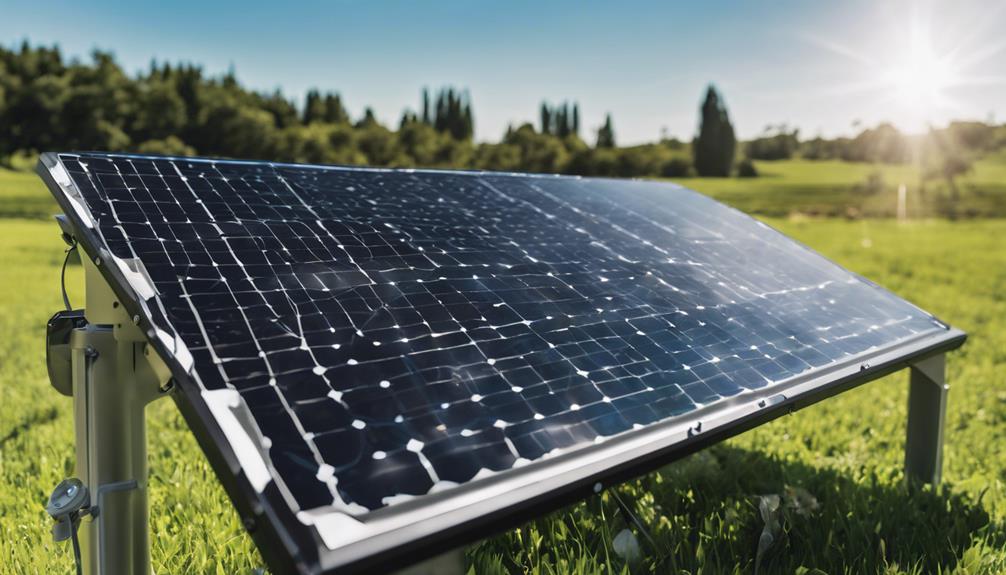
Understanding the Concept of CDs and Solar Panels
When exploring the effectiveness of solar panels, you may have come across the term “CDs” or “compact discs.” While it may seem unusual, the idea of using CDs in conjunction with solar technology has gained traction in some circles. This post aims to clarify whether CDs really work for solar panels and how they might play a role in enhancing solar energy systems. By understanding how these two technologies interact, homeowners and businesses can better evaluate their options for solar energy.
What are Solar Panels and How Do They Work?
Solar panels, also known as photovoltaic (PV) panels, are devices that convert sunlight into electricity. They are composed of solar cells made from semiconductor materials, usually silicon. When sunlight hits the solar cells, it excites electrons, generating electricity. This process is known as the photovoltaic effect. The efficiency of solar panels can be influenced by various factors, including the angle of sunlight, temperature, and the quality of materials used in their construction. Understanding these fundamentals is crucial for anyone considering solar energy as a sustainable solution for their energy needs.
Exploring the Use of CDs in Solar Applications
The idea of using CDs in solar applications stems from their reflective properties. Some enthusiasts suggest that CDs can be used to improve the efficiency of solar panels by reflecting additional light onto the solar cells. However, this concept is largely theoretical and not widely supported by scientific research or practical applications. While CDs may reflect light, the extent to which they can enhance the performance of solar panels is questionable. It’s essential to examine the claims critically to determine if they hold any real merit in the context of solar energy production.
The Science Behind CD Reflection and Solar Efficiency
To better understand whether CDs really work for solar panels, we must delve into the science of light reflection and absorption. Solar panels are designed to absorb as much sunlight as possible; therefore, any external factors that influence light behavior can impact their efficiency. CDs are made of polycarbonate plastic and contain a reflective aluminum layer that can bounce light. However, the angle and quality of light reflection from CDs may not be optimal for enhancing solar panel performance. Research suggests that minor adjustments to panel positioning and installation are more effective than relying on CDs to boost energy production.
Potential Benefits of Using CDs with Solar Panels
Despite the skepticism surrounding the use of CDs, some potential benefits could still arise from their application in solar energy systems. For instance, CDs could theoretically be used as makeshift reflectors in DIY solar projects for educational purposes or low-budget home energy solutions. They could help illustrate principles of light reflection and solar energy conversion. Additionally, using CDs could promote recycling and creative reuse, encouraging environmentally conscious practices. However, these benefits should be weighed against the practicality and efficiency of more established methods.
Real-World Applications and Limitations
While the idea of using CDs with solar panels may sound appealing, real-world applications face significant limitations. Most solar panel installations are designed with optimal angles and materials specifically engineered for maximum efficiency. Adding CDs to the mix could introduce complications, such as distortion of light angles and potential overheating of solar cells. Furthermore, the installation of CDs would require additional labor and resources, which may not justify the minimal benefits they could provide. In the long run, investing in high-quality solar panels and proper installation techniques will yield better energy production results than experimental methods involving CDs.
Alternative Solutions to Enhance Solar Panel Efficiency
Instead of relying on CDs, those looking to enhance the efficiency of their solar panels have several more effective options. Regular maintenance, such as cleaning the panels and ensuring they are free from debris, can significantly improve performance. Additionally, investing in solar panel optimizers and microinverters can help maximize the energy harvested from each panel. Upgrading to more efficient solar technology, such as bifacial panels or those with higher efficiency ratings, is also a worthwhile consideration. These alternatives provide proven results and can lead to better energy savings over time.
Conclusion: Weighing the Pros and Cons of CDs in Solar Technology
In conclusion, while the idea of using CDs to enhance solar panel performance is intriguing, the evidence supporting this practice is minimal. Do CDs really work for solar panels? The answer is largely no, as the effectiveness of CDs in improving solar energy production has not been substantiated by scientific research or practical applications. Instead, focusing on proven methods for enhancing solar efficiency, such as regular maintenance and investing in high-quality technology, is the best approach for those committed to maximizing their solar energy systems. By prioritizing effective solutions, you can harness the full potential of solar energy for your home or business.





